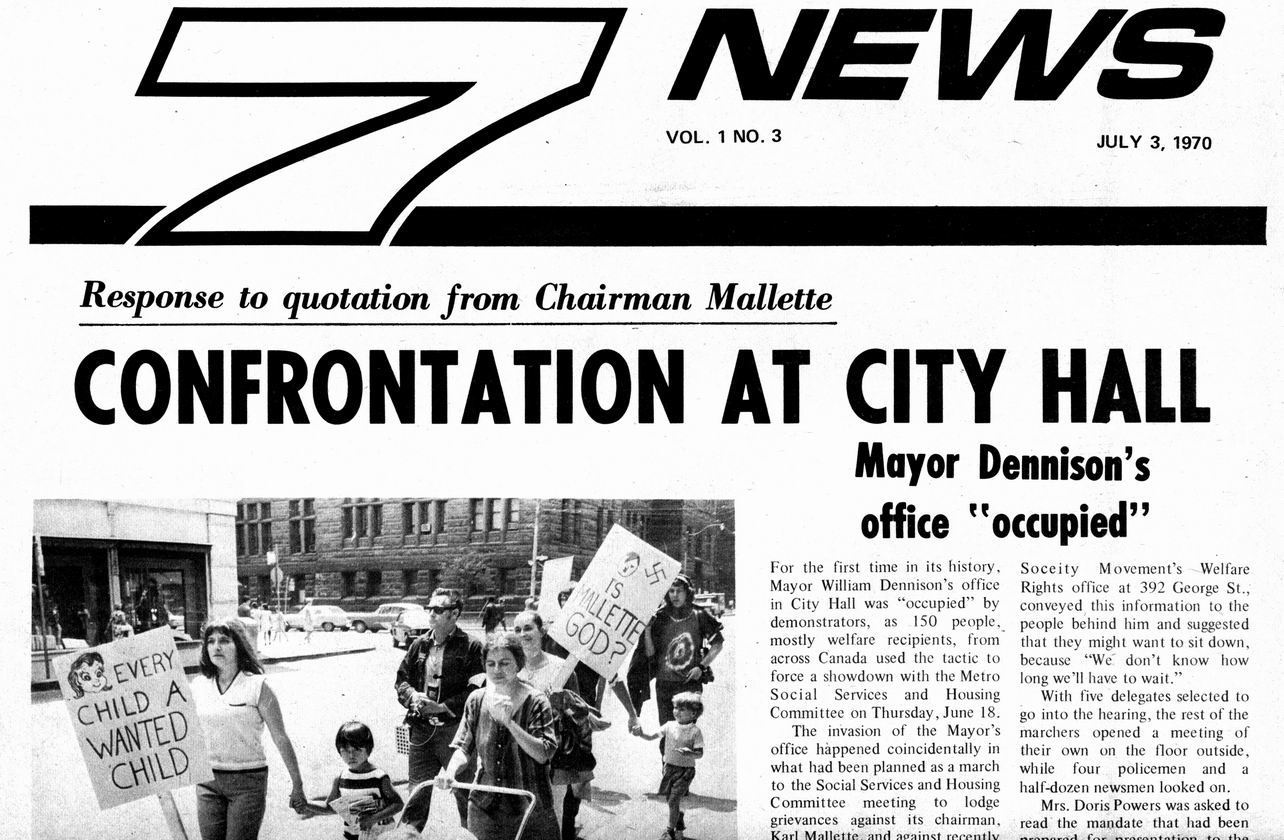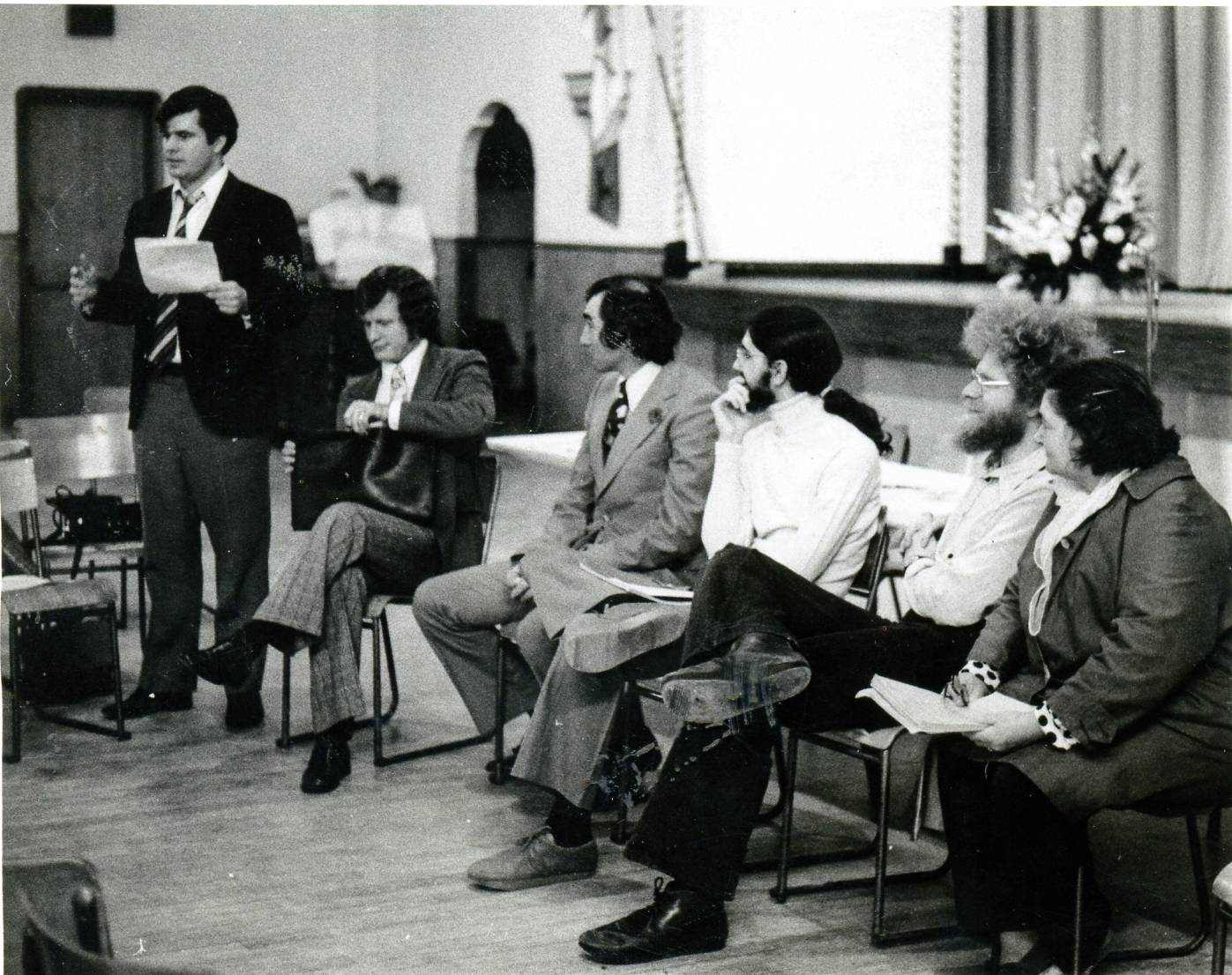|
|
|
|
7 News: The Life and Times
of a Community Newspaper

7 News was a newspaper published in Toronto, in the area east of downtown (known as “Ward 7”), in the 1970s and 1980s. Unlike most newspapers, which are privately owned and run as businesses, 7 News was a non-profit community-owned paper with an elected board of directors and general meetings which anyone living or working in the area could attend and participate in. Residents made the decision to start their own newspaper because they had learned that the mainstream corporate newspapers (at that time, the Toronto Star, the Globe and Mail, and the Toronto Telegram), were strongly aligned with the real estate industry and pro-development politicians. Residents who protested against City Hall and its ‘urban renewal’ schemes were either ignored, or portrayed as ignorant malcontents. Realizing that they could never get their side of any story portrayed fairly in the establishment newspapers, residents started their own. The first issue of the new paper, 7 News, rolled off the press in May 1970. For the next 15 years, it normally appeared every two weeks, publishing a total of 330 issues. The paper was delivered to some 20,000 homes, stores, and public institutions such as libraries, community centres, doctors’ offices, and even the Don Jail. The name 7 News (often also written as Seven News) was derived from the fact that it was published in and for what was then “Ward 7” of the City of Toronto. Wards are political divisions at the municipal level: each ward elects representatives to local government. Political boundaries were realigned in 1969; on the new electoral map, Ward 7 comprised the area between Sherbourne Street on the west and Logan Avenue on the east, from the waterfront up to Bloor Street and Danforth Avenue, with a small area running north of Danforth on the east side of the Don River. Ward 7 included a number of distinct neighbourhoods, including Riverdale to the east of the Don River; the Greek commercial strip along the Danforth; the Chinese community centered around the shopping area at Broadview and Gerrard; Regent Park, the public housing development bounded by Gerrard, Shuter, Parliament, and River streets; Trefann Court, lying directly south of Regent Park; Don Vale, situated north of Gerrard and east of Parliament, Moss Park, north of Queen, east of Parliament; and St. Jamestown, the high-rise area between Sherbourne and Parliament north of Wellesley; and the area south of Wellesley, which became known as South of St. Jamestown. The decision to start a local newspaper arose out of a series of conflicts between residents, on the one side, and City Hall and real estate developers, on the other. After the end of the Second World War, politicians, city planners, and social agencies began to make plans for addressing urban issues which had been neglected during the years of the Great Depression (1933-1939) and war (1939-1945). A shortage of affordable housing, coupled with the deterioration of existing housing in many areas of the city, loomed as one of the most urgent problems. Another priority, in the eyes of planners and businesses, was a modernization of the transportation infrastructure, understood as meaning building expressways and widening roads to accommodate automobile traffic. The neighbourhoods to the east of downtown found themselves in the crosshairs as urban ‘redevelopment’ schemes were planned and implemented without consulting residents. Planning studies had identified much of the inner city as ‘slums’ or ‘in decline’, and therefore ripe for ‘redevelopment’. Redevelopment in the language of the planners and politicians was usually a code word for bulldozing all the houses in an area and putting up apartment buildings. To find out more, see A History of Seven News by Lisa Horrocks (1984). Ward 7

Ward 7, as an entity, did not exist prior to 1969, and its creation was an intensely political decision. Ward 7 is the southern half of what was once Ward 2. After much research, social activists from the “wrong side of the tracks” (i.e. – south of Bloor Street) went to the Ontario Municipal Board and demanded that a “block ward” system be instituted to replace the “strip ward” system. Their reasoning was that aldermen should represent a group of people who are relatively the same. Usually aldermen came from Rosedale, and how could they possibly represent the two different and opposing groups – these south and those north of Bloor?
The separation of the affluent and working class areas had the desired effect – in the first local election 2 prominent social activists, John Sewell and Karl Jaffray, got elected; and as Mayor Dennison said: “They never would have been elected in Ward 2 ” (Fraser, 165). In the early 1970’s the already strong community spirit continued to grow, mainly as a direct answer to the developers who were trying to knock down most of the area in order to supplant the houses with high income generating apartment blocks. continued... Principles and Purposes

This statement of principles and purposes is taken from a pamphlet about 7 News published by 7 News 7 News is a community newspaper committed to serving the people of the Ward 7 community. 7 News believes that the interests of the community are best represented by the people themselves. We believe that people should have as much control as possible over the decisions that effect their lives, and we believe that 7 News should do whatever it can to help the community to achieve that control. It is our conviction that the actions of even the most benevolently motivated government, corporation, bureaucrat, or social worker, are of infinitely less value than actions of people actively participating in the democratic running of public affairs. continued... |